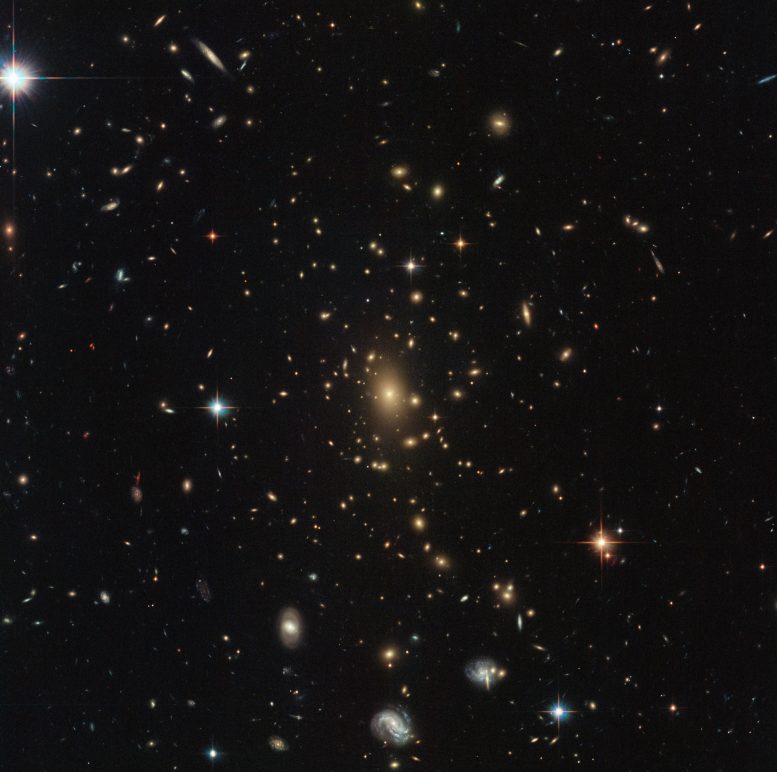Their incredible mass makes clusters very useful natural tools to test theories in astronomy, such as Einstein’s theory of general relativity. This tells us that objects with mass warp the fabric of spacetime around them; the more massive the object, the greater the distortion. An enormous galaxy cluster like this one, therefore, has a huge influence on the spacetime around it, even distorting the light from more distant galaxies to change a galaxy’s apparent shape, creating multiple images, and amplifying the galaxy’s light — a phenomenon called gravitational lensing. This image was taken by Hubble’s Advanced Camera for Surveys and Wide-Field Camera 3 as part of an observing program called RELICS (Reionization Lensing Cluster Survey). RELICS imaged 41 massive galaxy clusters with the aim of finding the brightest distant galaxies for the forthcoming NASA/ESA/CSA James Webb Space Telescope (JWST) to study.
